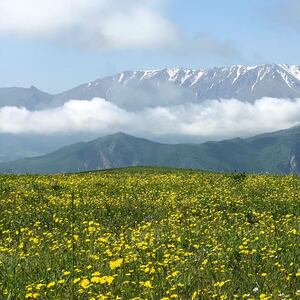When I was in my twenties, a friend came to visit me in Chicago. He was on a road trip, hoping to see a ball game in every stadium on his bucket-list. With no deadlines, no other plans, and his savings emptied, he slept in, and smelled like, his car. Unfortunately, he never planned regular oil changes and his rusty companion died along a California road, where he then left it and bought a beater to get home.
Spontaneous road trips can be about as freeing as they are also capable of putting you in a bind. I prefer to plan my adventures, rather than roll the dice. I’m told that elements of my approach are neurotic—though thousands of incident-free miles might beg to differ. I’ve found that it can make weeks-long road trips enjoyable by minimizing the unknowns, opening up opportunities for discovery, and saving money.
I was raised in an era of paper maps and guidebooks, which were stockpiled in glove compartments. My mother marked up maps like she was hunting for buried treasure. By starting information-rich, you could hopefully avoid emergencies that pop up when information is short. It also helps to mitigate pre-trip nerves.
ADVERTISEMENT
That era overlaps with my now utter reliance on a smartphone, though I still prepare digitally like those paper days. It still works well for the long road trips my spouse and I love to take. While for the countless thousands (or millions) of neurotic travel planners out there, here’s my approach.
First, take deep dives into Google Maps.
My last major road trip was to seven national parks and monuments, and it was over 5,200 miles and nearly three weeks long. Before I left, I dropped pins in Google Maps for all my parks and monuments and started my initial route planning by just letting Google give me its best directions to each major destination. (You can set up routes in Maps so that they include multiple stops.)
This route is just skeletal in nature and I expect it to change. I may adjust a route for a chance to sightsee along the way or to find a good, end-of-day hotel stop. Never underestimate the power of a good route. I’ve had spontaneous road trips that were great, but ended with long late night drives along infinite rows of Iowa cornfields and no real place to sleep.
I also save location pins for potential hotels, interesting coffee shops (because they are a must), locally recommended restaurants, laundry facility options, and—because we are often hiking—outdoor gear companies and emergency rooms at destinations. (If you’re driving along long stretches without towns, you may want to add refueling options.)
Many of these places are able to be found by simply searching for them in Maps, which will include reviews and photos from local guides at destinations, or other midway stops for breaks. But I always ask on social media for suggestions, scour threads at sites like TripAdvisor, or search for blog posts and articles on must-eats or must-stops in these locations. I also keep an ideas file for when I hear about a spot in random places (like Instagram).
Next, engineer the best hotel experience along that route without breaking the bank.
I will drive an extra 10-20 minutes outside of a larger city along my route, because I often find the same brand and room is available for much less than the location in town. My route on Maps helps me locate these options.
I still want to enjoy my stay, however, so the price is not my only criteria. I also check the year the hotel was built. That information can either be found on the hotel website or with a quick Google search. Frequently, the expensive hotel in the city is older than the same, less expensive version just outside town. Being recently built means a hotel has newer beds, cleaner accommodations, and quieter spaces with more modern features.
Yes, I could sleep in my car or find a Motel 6, but if you’re no longer in your twenties, then you’ll probably find that a decent bed can add legs to a road trip.
I take advantage of hotel membership apps, like Marriott’s Bonvoy, which allow me to have all my reservations at my fingertips. Gone should be the days of arriving at a hotel after a long drive only to find they overbooked and don’t have your room. Checking in by app (as soon as check-in is available) lessens the need to rush while on the road and it means (in theory) that you are now considered in a specific room.
Memberships also allow you to have pre-selected requests, like the number of pillows or floor you want to stay on, and earn points toward not only a free night, but better WiFi.
However, the best lodging option is still not always the cheapest. In those cases, I may check the app a few days ahead of arrival while on the road. I often find a rate for the same room at the same hotel for cheaper, meaning I can call the hotel and ask for their online rate or, if there is still time, I can book that room and then cancel my original reservation.
In other words, a good route and the right apps can help you save money at the front of a trip, allowing for more interesting stays (lodges, resorts, glamping, etc.) at your destination, where you’ll stay more than one night at higher prices.
Being information rich about a route may also enable you to make last minute changes. During one trip, for example, we decided we really wanted to fit in Mesa Verde National Park—it was part of our original plan, but was dropped for time and money. My route was already well-marked for alternate drives home and I saved enough that I could lose a non-refundable night by leaving our location early to squeeze in the park. I found a new room using my app, and discovered a great family owned coffee shop on the way to one of the most memorable national park experiences I’ve had to date.
Thirdly, play the data game.
As relying on a device can be data intensive, and since I have a rollover plan, I spend the prior billing period limiting my data. I check system settings for apps using the most data and limit access to background data, sticking mostly to WiFi. This allows for more data to rollover prior to my trip.
By starting data rich, I’m able to overshare on Instagram as much as I want, and also provide connectivity during long drives.
Many places, however, are data deserts—especially actual deserts—and this includes national parks, where tower service is intentionally limited. For these moments, I save specific map regions to my device before a trip. It is nice to have maps when you’re driving 80 mph along a Utah road marked “not patrolled.” GPS is a separate system on phones and will usually work with saved maps even without your usual data connection.
You could also get paper maps for backups, but saving maps for offline use usually eliminates the need for a glove compartment full of paper maps.
Similarly, if you’re going on a road trip that involves some hiking or cycling along the way, it is helpful to pick your trails ahead of time—you can always change your mind later. Have your first choices, but keep backups, because (at least in national parks) it is not uncommon for a trail to be closed, especially if a grizzly was spotted recently. With a good trail app, like Traillink, you can also save your cycling or hiking trails for offline use with GPS.
Fourthly, plan food options by assuming that every stop only offers a McDonalds.
I hunt for interesting local restaurants along the way, especially those that people consider the cherished institutions of their towns. I like to get them in when I can. Too often, however, the only real stops are fast food—the same fast food—over and over again. Even if you like fast food, it can get old, costly, and you add on weight quickly over several days of sedentary driving.
I try to have my own options planned into the trip. The right hotel will usually have breakfast covered, though not all are equal.
I load up the vehicle and cooler with good food made for some longevity—snack bars (one favorite is Cliff Bar), trail mix (usually homemade for us), pretzels, string cheese, some fruit, my homemade cold brew (because it can be stretched), and water—for those moments when I need to eat something but I also want to eat well. To spread out the cost, I start buying some food items a few weeks before the trip. (They also double as food options while hiking later.) After long hours on sparsely populated roads like Route 200 in Montana, you’ll be glad you brought something.
Lastly, I try to take care of unwelcome surprises before they become surprises.
I’ve lost count of how often I’m told by others that extended road trips over long distances are intimidating. Maybe they imagine movie-like scenarios of creepy small towns or being stalked by a serial-killing hitchhiker. Or perhaps they just fear not being prepared for the unknowns.
Yes, things can happen. At the start of a two week trip in 2017, for example, we found ourselves in the middle of a massive Missouri storm, dodging large hail, extremely high winds, and too close for comfort to a tornado. That, however, is not the norm.
One way to ease that discomfort of the unknowns is, of course, to create playlists of music you love and podcasts. For one trip, I knew we would be passing through a wide-range of landscapes so—because I started on preparation early enough—I created playlists with music I felt represented each region and podcasts on subjects related to our destinations. Also, to ease the “did I bring X” fear, my spouse creates a spreadsheet with what we plan to take, which can also be checked off when items are packed.
A good road trip should have unknowns, but it is always best when those unknowns are pleasant, rather than flat tires or accidents. For these moments on long trips, consider getting travel insurance, especially if you have less-than-desirable auto or health insurance coverage.
If you have reason to believe that you might have to return for a family emergency—which was my original reason for buying a plan—then travel insurance can lessen the pain of non-refundable expenses. Additionally, many people do not realize that if you’re hiking and you have to be evacuated due to an accident, that cost is on you, and it is really expensive. A good travel policy can cover this.
Similarly, keep the financial surprises at bay by using a credit card with fraud protection as your primary way to purchase. Notify your card companies that you’re on the road, so they don’t think your purchases are fraudulent, and to avoid having your info stolen by a skimmer at the pump, don’t use your debit card at the gas station unless you must. In that case, pay inside the station.
Of course, the amount of preparation will vary from person to person and it will depend on how much time you have ahead of the trip. For any trip, there are always going to be unknowns; most of them just make for good stories later. But to make room for those experiences, do the important planning. Architecting a good road trip can be the difference between being on an adventure or being a cautionary tale in a dead car along a California highway.







